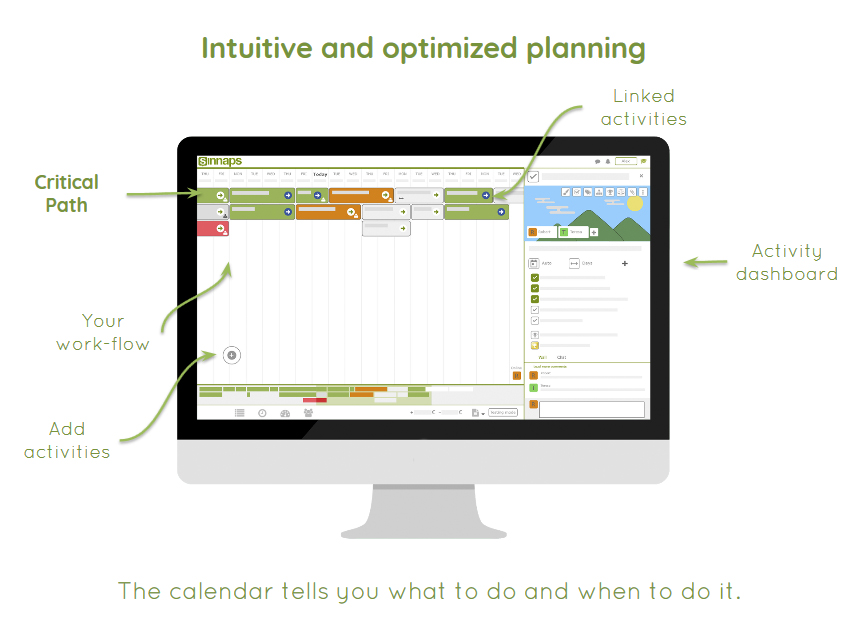Labour productivity refers to the amount of labour output derived from labour input. It is important for organisations to understand and measure in order to see if it needs to be increased. In this article, we will take a look at what labour productivity is, labor resources examples, how a labor hours calculator work and how Sinnaps project management app can help to increase labour productivity.

Índice
What is Labour Productivity?
Labour productivity, which is also known as workforce productivity, is defined as the economic output per labour hour. Labour requires resources, some labor resources examples include financial resources, human capital resources and technological resources. It should not be confused with employee productivity which is a measure of individual worker output. Besides, to understand what is labour productivity, it’s important to know some factors affecting productivity.
Labour productivity is also correlated with improved standards of living in society in the form of higher consumption. When an economy’s labour productivity increases, this means that it is producing more goods and services for the same amount of relative work. This makes it more possible for increased consumption at an increasingly reasonable price. A labor hours calculator can help organisations to determine their labour productivity.
Some recommendations…
Best Productivity Systems for Work
How to Increase Labor Productivity in the Workplace?
Labor productivity is essentially a measure of labor efficiency. Sometimes, an organisation may feel that it needs to increase labor productivity and there are a number of things that can be done, such as the following:
- Match the Right People to Jobs: An effective manager and/or leader is one that know each workers skills and abilities. This is imperative if you want to increase labor efficiency as getting the right person to do a job will mean that it is done better. Using a project planner such as Sinnaps allows you to clearly plan out the tasks of a project so that you can then decide who should be assigned to which task based on their skills and abilities.
- Track Employee Time: Time can be wasted easily, and it is important to allocate work time effectively and that employees stick to the schedule. Sinnaps offers a schedule personalised to each team member taking into consideration the tasks that they have been assigned to. This can greatly help to increase labor productivity as people know what needs to be done and by when.
- Communicate Effectively: Clear and consistent communication are the hallmarks of labor efficiency. It is important to have fixed lines of communication so that problems and doubts can be resolved, and discussion stimulated. Sinnaps offers a number of communicative tools such as the project wall, live in-chat features and weekly email updates apart from allowing you to communicate with your team wherever in the world they may be.
- Keep Goals Clear: If team members or employees do not have clear goals to follow it is unlikely that they will be very productive. Goals should be clearly laid out and the method for achieving those goals should be determined. Sinnaps allows you to effectively plan out the goals of your project, highlighting milestones and any bottlenecks along the way while also automatically calculating the critical path of your project.

- Incentivise Employees: Recognition is one of the best forms of reward. Workers enjoy feeling valued in the organisation and take pride when their good work is recognised. Incentivising employees can be a great way to increase labor efficiency and there are various rewards and forms of recognition that can be given.
Labor Cost Calculator
A labor cost calculator is used to calculate labor productivity. It helps to determine the impact of labor on total production costs and part costs. Labor costs are affected by production time, labor rate, amount of workers and labor usage. Using these measures, the total labor cost for production will be calculated, as well as also calculating the cost that can be attributed to each part.
Some recommendations…
Labor Productivity is Measured by the Labor Productivity Equation
Labor productivity and labor efficieny is measured by using the labor productivity equation. In terms of a country, its labor productivity is a function of technological innovation, capital investment and other labor resources.
The labor productivity equation looks like this:
Labor Productivity = Total Output / Total Productive Hours
How to Calculate Labor Productivity Example
Let’s measure employee productivity with the labor productivity equation: total output / total input. Let’s say that a company generated $60,000 worth of goods or services, which is the output, using 1,000 labor hours, which is the input. To calculate the company’s labor productivity, we divide 60,000 by 1,000, which equals 60. This is the labor productivity of the company: it is procuring $60 worth of goods and services to be sold for every hour worked.
The labor productivity growth rate can be measured in percentage terms taking previous years and comparing them to actual labor productivity. Labor productivity growth can be attributed to improvements in technological progress or due to an increase the amount of capital, whether human or physical that is available to workers.
Labor productivity is something that organisations should monitor, which is easy with software such as Sinnaps that include KPIs that let you know how your team is performing! Leave us a comment and letting us know if this article helped you and your tips for increasing labor productivity. 😊
Some recommendations…

